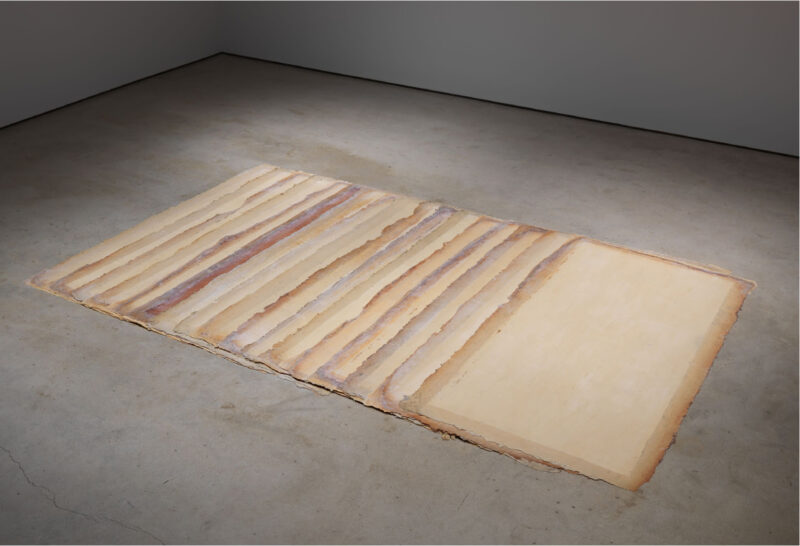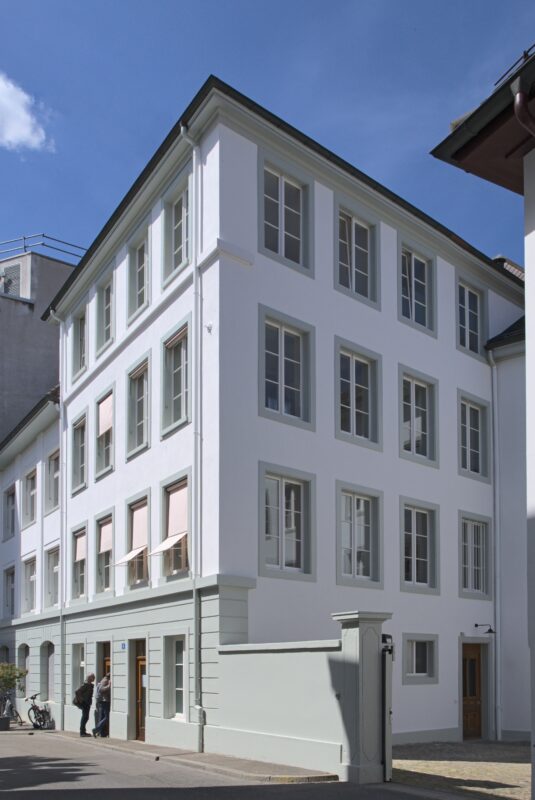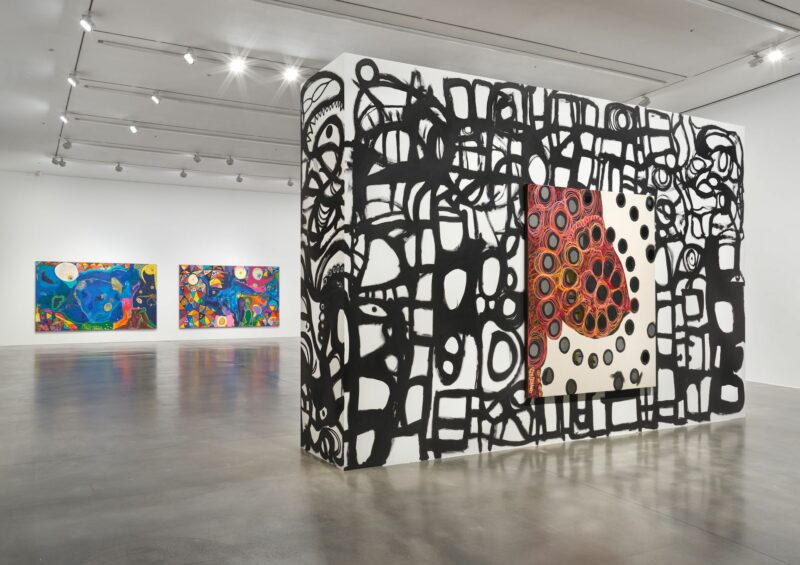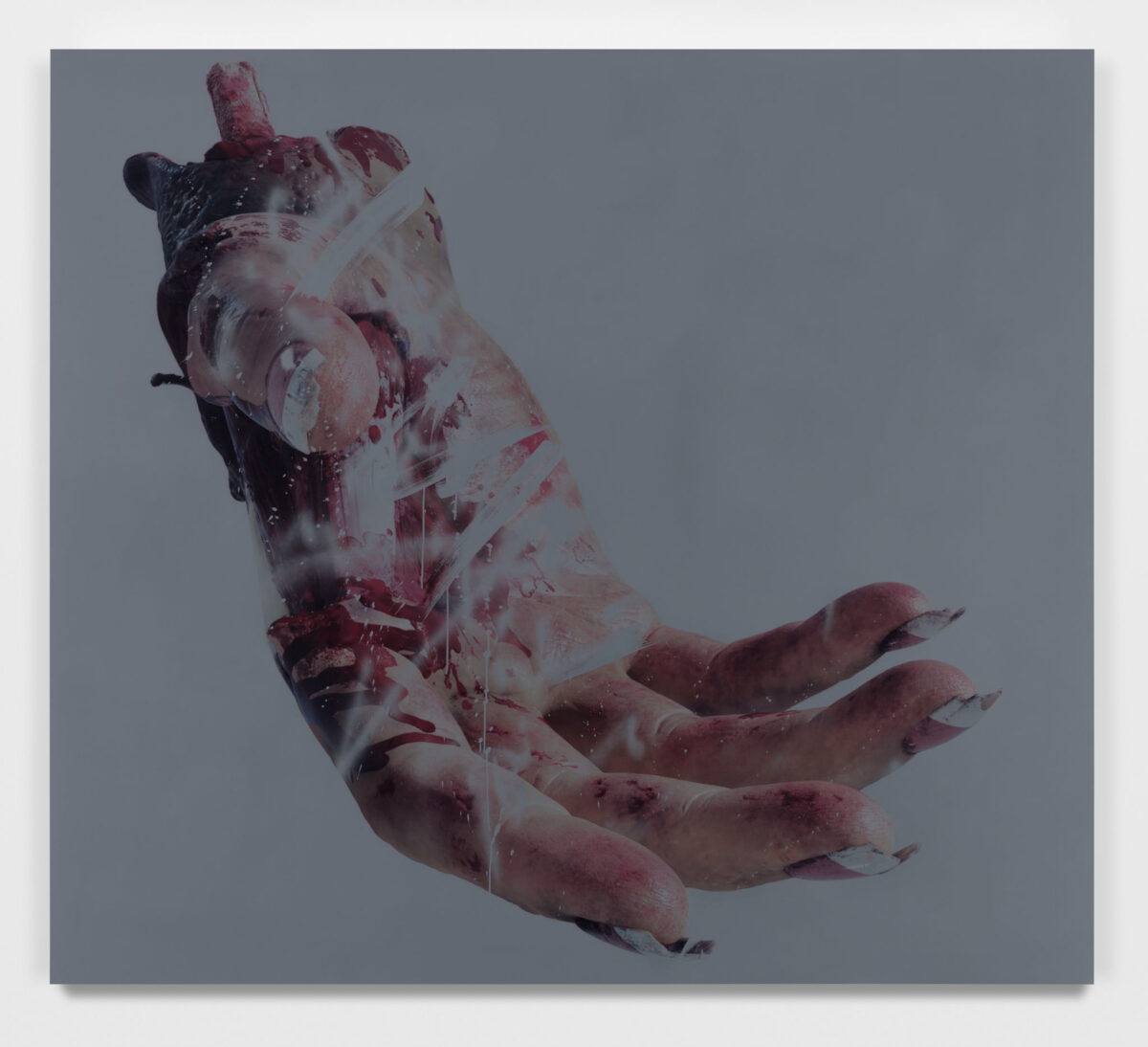
Coinciding with Frieze London and Masters, new work by Avery Singer will debut in a solo exhibition across both spaces of Hauser & Wirth’s Saville Row Space, exploring the artist’s personal experience of 11th September 2001.
The exhibition ‘Free Fall’, displayed across both spaces of the London gallery, explores Avery Singer’s personal experience of September 11th, 2001, and the societal impact of this collective trauma. A series of new paintings will be displayed in an environment that replicates Singer’s memories of the interior of the World Trade Center offices—spaces she regularly visited in the years prior as her mother worked in both buildings—combining the subtle banalities of office life with the architectural specificity of the iconic design by Minoru Yamasaki, creating a quietly disorientating installation that is part stage-set, part minimalist sculpture.
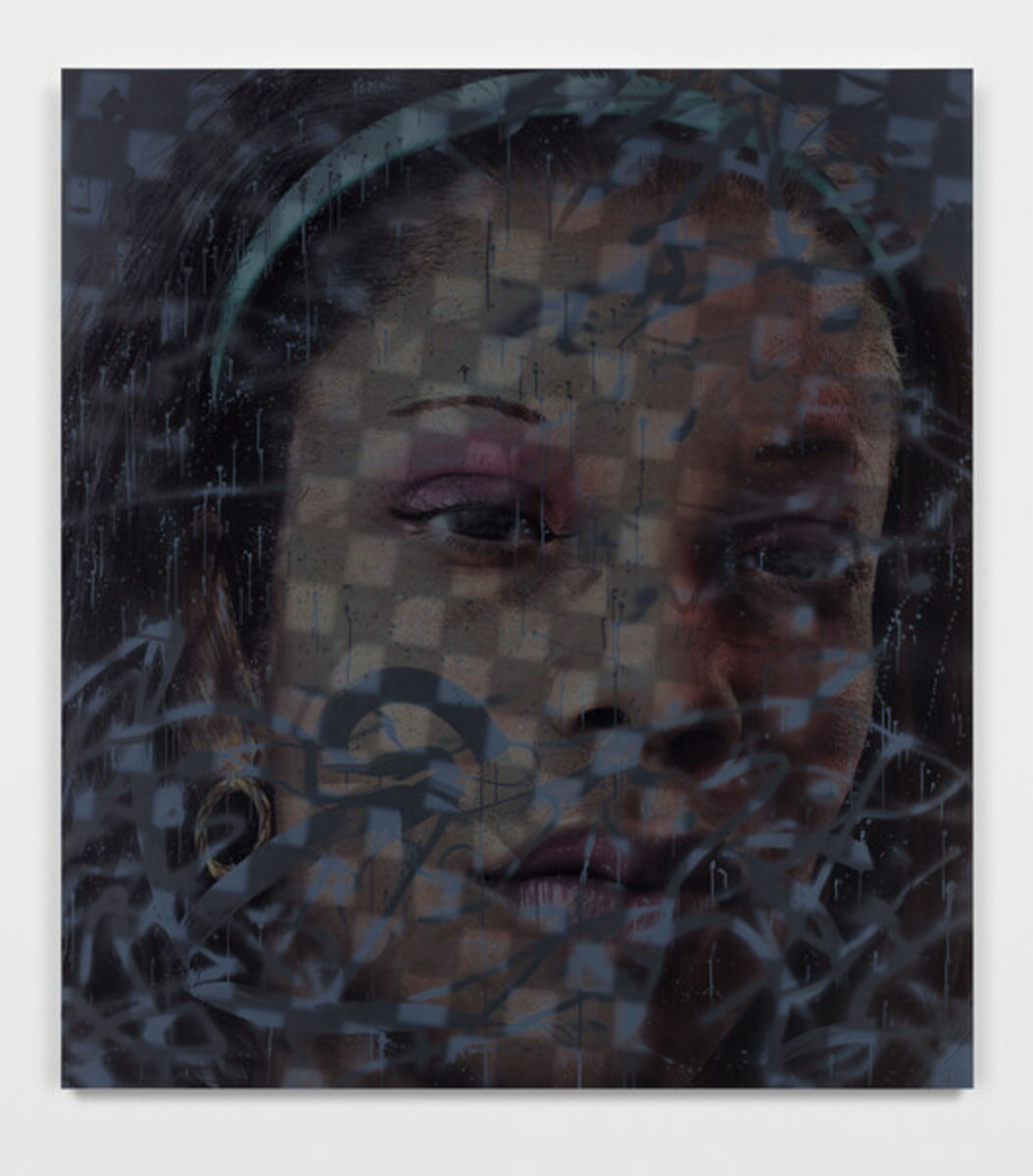
‘Free Fall’ is both a monument to Singer’s memories of the towers pre 9/11 and a memorial to her experiences of New York in the aftermath of the terrorist attack. Since 2010, Singer has employed the binary language of computer programs and industrial materials to remove the trace of the artist’s hand while engaging the tradition of painting and the legacy of modernism. These new, large-scale paintings combine digital renderings with manual and digital airbrush techniques, liquid and solid masking, and complex layering processes
Avery Singer. Free Fall, Hauser & Wirth London, 11th October – 22nd December 2023, hauserwirth.com
About the singer
Avery Singer (b. 1987) was born and raised in New York. Her parents, the artists Janet Kusmierski and Greg Singer, named her after Milton Avery. Growing up in a creative community, Singer experimented with photography, film, and drawing, but in those years never considered working with paint. In 2008, Singer studied at the Städelschule, Frankfurt am Main, and in 2010, she received her B.F.A. from Cooper Union, New York. During her studies, Singer engaged in performance art, video making, as well as sculpture utilizing carpentry, metal casting and welding. After graduation, she discovered her chosen art form from an unanticipated experiment with SketchUp, a program used by her peers to design exhibition spaces, and airbrushed a black-and-white painting based on a digital illustration. Since then, Singer has employed the binary language of computer programs and industrial materials in order to remove the trace of the artist’s hand while engaging the tradition of painting and the legacy of modernism.
Singer’s earliest works dramatize her subject matter and parodies the life of an artist. In her first solo exhibition at Kraupa-Tuskany Zeidler, Berlin in 2013, aptly titled ‘The Artists,’ Singer explored stereotypes of how artists live, work, and socialize. From a fake press release staged in the exhibition as a part of a larger series entitled ‘Press Release Me,’ Singer mocks the production of sanctioned artistic language, as well as the artist as a social being. Focusing on tired tropes surrounding the myths of artistic bravado, inebriation, and narcissism, the text ‘Cologne Painter’ satirically commemorates the fantasy of a non-existent art scene.
The paintings in the show depict other typified art-world scenarios, including a meeting with collectors in ‘Jewish Artist and Patron’ (2012), the ritual of a studio visit in ‘The Studio Visit’ (2012), and nostalgic moments from the 1960s avant-garde in ‘Happening’ (2014). In these works, Singer’s subjects place the distance between fantasies of the artistic life and the realities of it, at the forefront of her expression. Her formal practice incorporates figures depicted in constructivist-like forms, which convey their expressions through exaggerated poses and dramatically tousled hair. Rendered in grisaille and full of symbolic imagery, Singer’s paintings nod to past art historical movements such as constructivism, futurism and cubism.
In ‘Sad Woman Projecting Libidinal Thoughts’ (2014), a reclining female nude is constructed from flat planes of geometric data. Idealized throughout the canon as sensual and utopic, the fantasizing woman here is despondent: she sits in the shadows, her hair falls in front of her face, and her legs are akimbo, drawing attention to her sexual anatomy. This female figure is reworked in the painting, ‘Untitled (Monday)’ (2017), where more abstract shapes and shadows further push Singer’s ‘sitter’ away from realism, toward the expression of computer programming software. The blue and green cubes act as polygonal mesh, giving shape and contour to the character on display. In a commission for Museum Ludwig in 2019, Singer created the seven-panel painting, ‘Untitled’ (2019), that evokes the feeling of a three-dimensional Cartesian world on a two-dimensional canvas.
Through the use of new technologies to depict past art historical references, Singer pushes past the limitations of painting. Her first self-portrait, ‘Self Portrait (Summer 2018)’ (2018), exhibited at the 2019 Venice Biennale, incorporated a new process with liquid rubber, spray bottles, and watered-down white paint to achieve the reproduction of foggy glass. The resulting image is a self-portrait in the shower, a subject similar to the classical genre of Venus or bathers, complicated by the light that passes through air, water, and glass. Singer is successful in her experiments to redevelop the future of painting, employing virtual fictional characters and symbols taken out of art history or the current art world, to turn the expected on its head. Often reimagining the subject of painting and image-making as the subject itself, by disengaging with romanticized views, Singer creates her own way of seeing.

